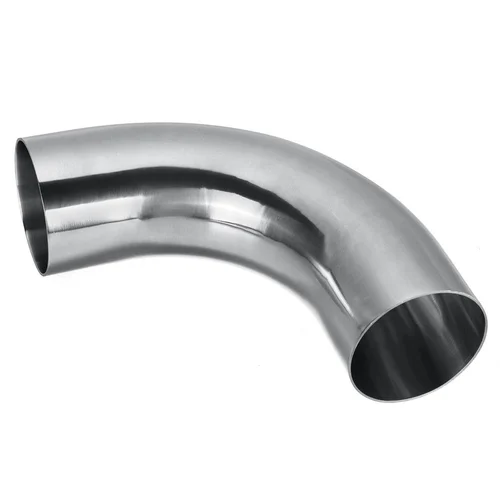-
Cangzhou Yulong Steel Co., Ltd.
-
Phone:
+86 13303177267 -
Email:
admin@ylsteelfittings.com
- English
- Arabic
- Italian
- Spanish
- Portuguese
- German
- kazakh
- Persian
- Greek
- French
- Russian
- Polish
- Thai
- Indonesian
- Vietnamese
- Zulu
- Korean
- Uzbek
- Hindi
- Serbian
- Malay
- Ukrainian
- Gujarati
- Haitian Creole
- hausa
- hawaiian
- Hebrew
- Miao
- Hungarian
- Icelandic
- igbo
- irish
- Japanese
- Javanese
- Kannada
- Khmer
- Rwandese
- Afrikaans
- Albanian
- Amharic
- Armenian
- Azerbaijani
- Basque
- Belarusian
- Bengali
- Bosnian
- Bulgarian
- Catalan
- Cebuano
- China
- China (Taiwan)
- Corsican
- Croatian
- Czech
- Danish
- Esperanto
- Estonian
- Finnish
- Frisian
- Galician
- Georgian
- Kurdish
- Kyrgyz
- Lao
- Latin
- Latvian
- Lithuanian
- Luxembourgish
- Macedonian
- Malgashi
- Malayalam
- Maltese
- Maori
- Marathi
- Mongolian
- Myanmar
- Nepali
- Norwegian
- Norwegian
- Occitan
- Pashto
- Dutch
- Punjabi
- Romanian
- Samoan
- Scottish Gaelic
- Sesotho
- Shona
- Sindhi
- Sinhala
- Slovak
- Slovenian
- Somali
- Sundanese
- Swahili
- Swedish
- Tagalog
- Tajik
- Tamil
- Tatar
- Telugu
- Turkish
- Turkmen
- Urdu
- Uighur
- Welsh
- Bantu
- Yiddish
- Yoruba

Nov . 01, 2024 06:43 Back to list
Understanding ANSI Class 150 Flange Specifications and Applications in Industrial Settings
Understanding ANSI Class 150 Flanges
In the realm of piping systems, flanges play a pivotal role in connecting pipes, valves, pumps, and other equipment, ensuring a secure and leak-proof assembly. Among the various types of flanges available, the ANSI Class 150 flange is a widely used component in various industries, including oil and gas, water treatment, chemical processing, and more.
What is ANSI Class 150 Flange?
The ANSI (American National Standards Institute) Class system categorizes flanges based on their pressure-temperature ratings. The ANSI Class 150 flange is designed to withstand pressures up to 150 pounds per square inch (psi) at a specified temperature. This classification is essential for engineers and designers when selecting the appropriate flange for specific applications.
Material Considerations
ANSI Class 150 flanges are available in a variety of materials, including carbon steel, stainless steel, and alloy steel. The choice of material depends on the specific requirements of the application, such as temperature, pressure, and the nature of the fluid being transported. For instance, stainless steel flanges are often preferred in corrosive environments due to their resistance to rust and corrosion.
Design and Manufacturing Standards
ansi class 150 flange

The design and manufacturing of ANSI Class 150 flanges are governed by strict industry standards, ensuring safety and reliability. These flanges typically feature a raised face, which helps in achieving a tight seal when bolted to the corresponding flange. The dimensions, bolt patterns, and gasket specifications are all standardized, allowing for compatibility across different manufacturers.
Applications
ANSI Class 150 flanges are used in a wide range of applications. They can be found in water pipelines, chemical processing plants, HVAC systems, and oil and gas installations. Their versatility and durability make them suitable for both low and moderate-pressure applications.
Installation and Maintenance
Proper installation and maintenance of ANSI Class 150 flanges are critical to prevent leaks and system failures. It is essential to use the correct gaskets and bolts, and to follow torque specifications during assembly. Regular inspections can help identify wear or damage, ensuring continued integrity of the piping system.
Conclusion
In summary, ANSI Class 150 flanges are an integral component of many piping systems. Understanding their specifications, material options, and proper maintenance techniques is crucial for engineers and technicians alike. As industries continue to evolve, the demand for reliable and efficient piping solutions like ANSI Class 150 flanges will remain strong, ensuring safe and effective fluid transport across various sectors.
Latest news
-
ANSI 150P SS304 SO FLANGE
NewsFeb.14,2025
-
ASTM A333GR6 STEEL PIPE
NewsJan.20,2025
-
ANSI B16.5 WELDING NECK FLANGE
NewsJan.15,2026
-
ANSI B16.5 SLIP-ON FLANGE
NewsApr.19,2024
-
SABS 1123 FLANGE
NewsJan.15,2025
-
DIN86044 PLATE FLANGE
NewsApr.19,2024
-
DIN2527 BLIND FLANGE
NewsApr.12,2024
-
JIS B2311 Butt-Welding Fittings LR/SR 45°/90° /180°Seamless/Weld
NewsApr.23,2024











